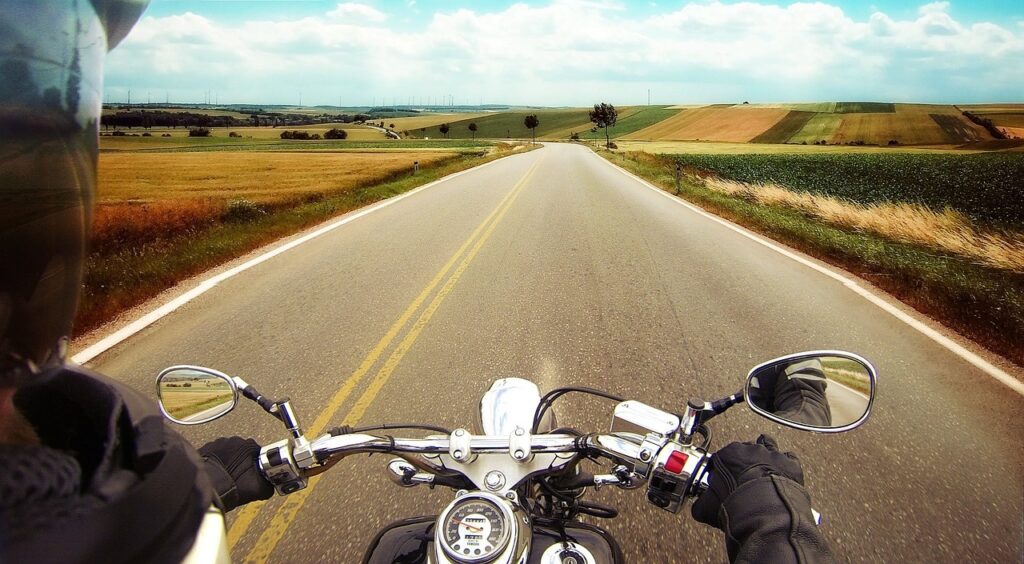
Planning a Motorcycle Road-Trip – Everything You Need to Know
Motorcycle road-trips have gained immense popularity among travel enthusiasts and adventure seekers. These thrilling journeys on two wheels offer a unique and immersive way to explore the world. Unlike traditional forms of travel, motorcycle road-trips provide a deeper connection with the surroundings, allowing travelers to feel every twist and turn of the road, inhale the scents of nature, and experience a destination in a more intimate and authentic manner. The allure of the open road, the sense of independence, and the adrenaline rush that comes with navigating challenging terrains make taking a motorcycle road-trip an unforgettable adventure.
Whether it’s cruising along scenic coastal highways, conquering winding mountain roads, or exploring off-the-beaten-path destinations, the freedom of riding a motorcycle amplifies the thrill of discovery and adds an extra layer of excitement to your journey. Every twist of the throttle brings a surge of adrenaline and a sense of liberation, making motorcycle road-trips an extraordinary way to break free from the ordinary and embrace the spirit of adventure.
Choosing the Destination
The first step in planning your motorcycle trip is deciding on a destination. There are endless destinations across the U.S. to choose from. I have decided 5 factors to consider when choosing the perfect destination for your adventure:
- Scenic Routes: Look for destinations that offer stunning and diverse landscapes along the way. Whether you prefer winding mountain roads, coastal highways, or countryside vistas, choose a route that caters to your preferred scenery.
- Motorcycle-Friendly Destinations: Some places are more motorcycle-friendly than others, providing a welcoming environment for riders. Look for destinations that have a vibrant motorcycle culture, with plenty of resources and services catering specifically to bikers. These destinations often have well-maintained roads, ample parking for motorcycles, and a variety of motorcycle-friendly accommodations and attractions.
- Iconic Roads and Landmarks: Consider destinations that boast famous roads or landmarks that are on every motorcyclist’s bucket list. Riding along the Pacific Coast Highway, tackling the curves of the Tail of the Dragon, or exploring the historic Route 66 can add an extra layer of excitement and fulfillment to your road-trip. Choose a destination that allows you to tick off those iconic routes or landmarks you’ve always dreamed of experiencing.
- Seasonal Considerations: Take into account the weather and seasonal conditions of your potential destinations. Some regions may be more favorable for motorcycle travel during specific times of the year. Research the climate, road conditions, and any potential weather hazards that could affect your journey. Consider the best time to visit to ensure a safe and enjoyable experience.
- Personal Interests: Align your destination choice with your personal interests and preferences. If you love exploring cultural heritage, consider destinations with rich history and cultural attractions. If you’re an outdoor enthusiast, look for destinations that offer opportunities for hiking, camping, or other outdoor activities along your route. Choosing a destination that resonates with your passions will make your road-trip even more rewarding.
Remember to strike a balance between the destination’s appeal and the feasibility of the journey. Evaluate the distance, duration, and potential challenges of reaching your chosen destination to ensure it aligns with your riding abilities and available time. With careful consideration and research, you’ll be able to select a destination that guarantees a thrilling and unforgettable motorcycle road-trip.
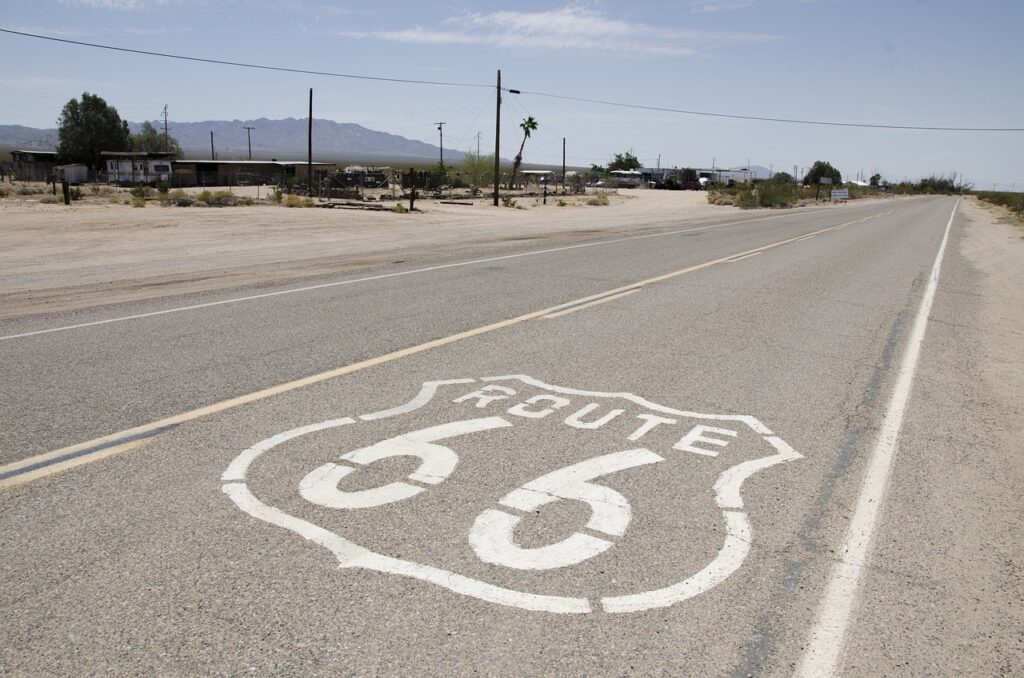
Planning Your Route
A well-thought-out route is the backbone of a successful motorcycle road-trip. It ensures you make the most of your journey, discover hidden gems, and navigate efficiently. Here are some tips to help you plan your route effectively:
- Research and Map Your Journey: Start by researching the areas you plan to visit and identify the key attractions, scenic routes, and points of interest along the way. Take advantage of online resources, travel forums, and guidebooks to gather information about the roads, local attractions, and any specific considerations for motorcyclists. Use digital mapping tools, such as GPS devices, smartphone apps, or online route planners, to map out your journey and get a visual overview of the route.
- Determine the Duration: Decide on the duration of your road-trip based on the distance you plan to cover, the time available, and your preferred pace. Consider how many miles or kilometers you are comfortable riding each day, factoring in rest stops, sightseeing, and potential detours. Be realistic in your estimation to ensure you have a comfortable and enjoyable experience without feeling rushed.
- Flexibility and Alternative Routes: While having a planned route is essential, be open to flexibility and spontaneous detours. Leave room for unexpected discoveries and allow yourself the freedom to explore off-the-beaten-path destinations or take scenic detours. Sometimes the most memorable experiences come from unplanned adventures, so strike a balance between having a planned route and allowing room for spontaneity.
- Consider Road Conditions: Take into account the condition of the roads along your route. Some roads may have potholes, gravel sections, or other hazards that require careful navigation, especially for motorcycles. Check for any road closures or construction projects that could impact your journey and adjust your route accordingly. Stay updated with local road conditions and be prepared for different types of terrain you might encounter.
- Breaks and Rest Stops: Plan regular breaks and rest stops to give yourself time to relax, stretch your legs, and take in the surroundings. Factor in opportunities for meals, refueling, and restrooms. Incorporate scenic viewpoints or attractions along your route where you can take a break and fully appreciate the beauty of the landscape.
- Share Your Itinerary: Consider sharing your itinerary with a trusted friend or family member. Let them know your planned route, estimated timings, and accommodations. This adds an extra layer of safety, as someone will be aware of your whereabouts and can check on you if needed.
Remember, the route is a guide, not a strict rule. Be prepared to adapt and make adjustments along the way based on unforeseen circumstances, recommendations from locals, or simply following your intuition. A well-planned route sets the stage for an incredible adventure, but it’s the unexpected moments that often become the highlights of your motorcycle road-trip.
Packing Essentials
Packing efficiently and thoughtfully is crucial. Space is limited, and having the right essentials ensures you’re prepared for the journey ahead. Here are some key items to include on your packing checklist:
- Riding Gear: Your riding gear is your armor on the road, providing protection and comfort. Pack essentials such as a well-fitted helmet, riding jacket, gloves, sturdy pants, and boots. Consider weather conditions along your route and pack additional layers or rain gear as necessary. Invest in high-quality gear that offers durability and protection.
- Clothing: Pack lightweight, versatile clothing that can be layered for different weather conditions. Include items such as t-shirts, long-sleeve shirts, jeans or riding pants, shorts, socks, underwear, and sleepwear. Opt for moisture-wicking fabrics that dry quickly. Remember to pack appropriate attire for off-bike activities or dining out.
- Essential Documents: Carry all necessary documents, including your driver’s license, motorcycle registration, insurance papers, and any required identification or permits for international travel. Keep these documents in a waterproof folder or bag to protect them from the elements.
- Tools and Repair Kit: Prepare a basic toolkit that includes essential tools like screwdrivers, wrenches, pliers, and tire repair kits. Familiarize yourself with your motorcycle’s specific requirements and pack any spare parts or consumables you may need, such as fuses, bulbs, or brake pads. It’s also a good idea to carry duct tape, zip ties, and a tire pressure gauge.
- First Aid Kit: Accidents can happen on the road, so a well-stocked first aid kit is essential. Include items like adhesive bandages, sterile gauze, antiseptic wipes, pain relievers, insect repellent, sunscreen, and any personal medications you may require.
- Navigation Tools: Carry a reliable GPS device or smartphone with a dedicated navigation app. Make sure to have a mounting system for easy visibility and accessibility while riding. Additionally, keep physical maps or a road atlas as a backup in case of technology failure or lack of connectivity.
- Hydration and Snacks: Staying hydrated is important, especially on long rides. Pack a reusable water bottle and consider a hydration backpack or a hydration system for easy access. Carry non-perishable snacks like energy bars, nuts, or dried fruits to keep you fueled throughout the journey.
- Electronics and Chargers: Bring necessary electronics such as your smartphone, camera, and action camera to capture the moments and navigate. Don’t forget to pack chargers, power banks, and any required adapters to keep your devices powered up.
- Personal Care Items: Include toiletries such as toothbrush, toothpaste, soap, shampoo, sunscreen, lip balm, and any personal care products you use regularly. Consider travel-sized containers or invest in compact, multi-purpose products to save space.
- Emergency Preparedness: Prepare for unexpected situations by carrying items like a flashlight, a compact multi-tool, emergency cash, a reflective vest, and a whistle for roadside emergencies or breakdowns.
Remember to pack as lightly as possible, prioritizing the essentials. Space is limited on a motorcycle, so pack smartly to maintain balance and stability while riding. Distribute the weight evenly and utilize storage compartments or luggage systems designed for motorcycles. With careful planning and packing, you’ll have everything you need for a comfortable and worry-free motorcycle road-trip.
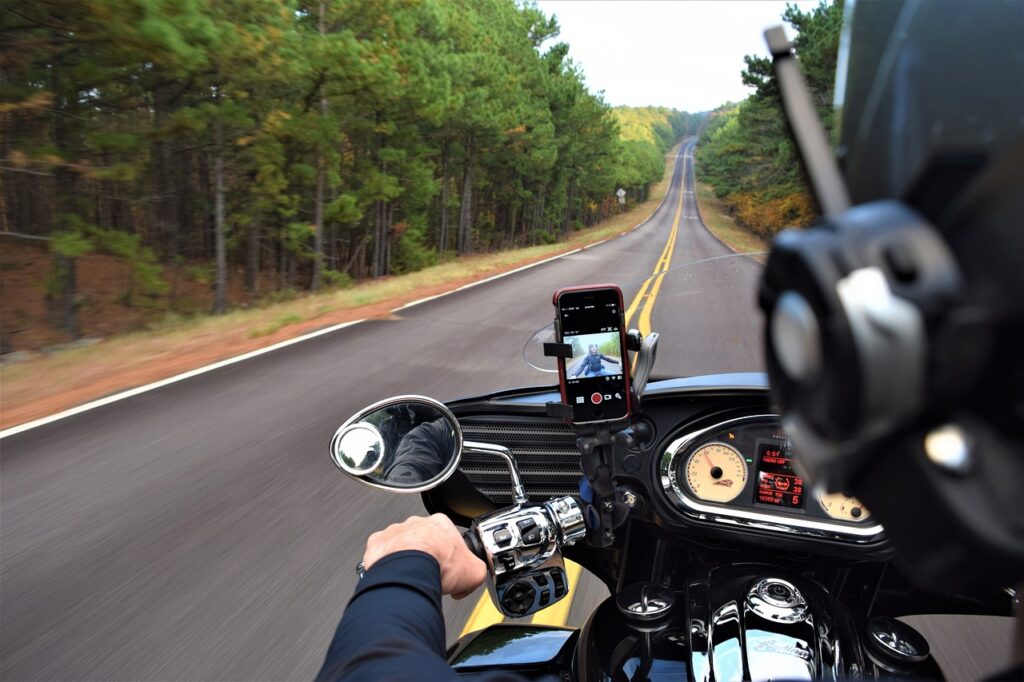
Motorcycle Maintenance
Before embarking on a motorcycle road-trip, it’s essential to ensure your bike is in optimal condition. Proper maintenance not only enhances your safety but also minimizes the chances of mechanical issues during your journey. Here are some key aspects of motorcycle maintenance to consider:
- Tires: Check the condition and tread depth of your tires. Ensure they are properly inflated to the recommended pressure. Inspect for any signs of damage, cracks, or bulges. Consider replacing worn-out tires before your road-trip to avoid potential blowouts or decreased traction on the road.
- Brakes: Verify that your brakes are working effectively. Inspect brake pads for wear and replace them if necessary. Test the brake lever and pedal to ensure a firm and responsive braking action. Consider flushing and replacing the brake fluid if it hasn’t been done recently.
- Fluids: Check the levels of vital fluids such as engine oil, coolant, brake fluid, and transmission fluid. Top up or replace fluids as needed according to your motorcycle’s manufacturer recommendations.
- Lights and Electrics: Confirm that all lights, including headlights, taillights, turn signals, and brake lights, are functioning correctly. Replace any burnt-out bulbs or faulty electrical components. Ensure your battery is charged and in good condition, and carry a battery charger or jumper cables as a precaution.
- Chain or Belt: If your motorcycle has a chain or belt drive, inspect it for proper tension, lubrication, and wear. Adjust the chain tension as needed and apply lubrication according to the manufacturer’s guidelines. Replace the chain or belt if it’s worn beyond the recommended limits.
- Suspension: Check the suspension components for leaks, damage, or excessive wear. Verify that the suspension is properly adjusted and functioning smoothly. Adjust the preload and damping settings if necessary, considering the additional weight of your luggage and gear.
- Controls and Cables: Ensure all controls, including the throttle, clutch, and brake levers, are moving smoothly and not binding. Lubricate cables and pivot points as recommended by the manufacturer to maintain optimal performance.
- Mirrors and Windshield: Clean and adjust your mirrors for clear visibility. Check the condition of your windshield or fairing, if applicable, and ensure it’s securely mounted.
- Toolkit and Spare Parts: Carry a basic toolkit that includes essential tools for minor repairs and adjustments on the road. Familiarize yourself with your motorcycle’s specific requirements and carry spare parts that are prone to wear or known to fail, such as fuses, bulbs, or spark plugs.
- Pre-Trip Test Ride: Before setting off on your road-trip, take your motorcycle for a test ride to ensure everything is functioning correctly. Pay attention to any unusual noises, vibrations, or handling issues. Address any concerns or abnormalities before hitting the road.
Remember to consult your motorcycle’s owner manual for specific maintenance procedures and intervals recommended by the manufacturer. If you’re not confident in your own mechanical skills, consider having a professional mechanic perform a thorough inspection and tune-up before your road-trip.
Safety Tips
When embarking on a motorcycle road-trip, prioritizing safety is paramount. Motorcycles offer a thrilling and liberating experience, but they also require extra caution and awareness on the road. Here are some essential safety tips to keep in mind:
- Defensive Riding: Practice defensive riding techniques to anticipate potential hazards and react accordingly. Be aware of your surroundings, maintain a safe distance from other vehicles, and consistently scan the road ahead for any obstacles or dangers. Anticipate the actions of other drivers and be prepared to adjust your riding accordingly.
- Visibility: Make yourself as visible as possible to other road users. Wear bright or reflective gear and use your motorcycle’s lights at all times, even during daylight hours. Avoid riding in blind spots of larger vehicles and use hand signals or indicators to communicate your intentions.
- Riding Gear: Always wear proper protective gear, including a DOT-approved helmet, riding jacket, gloves, sturdy pants, and boots. Invest in gear that offers impact protection and abrasion resistance. Dress according to the weather conditions, and consider layering to adapt to changing temperatures.
- Road Conditions: Be mindful of road conditions and adjust your riding style accordingly. Watch out for gravel, potholes, or debris that could affect your bike’s stability. Take caution in wet or slippery conditions and be prepared for reduced traction. Adjust your speed and braking distance accordingly.
- Road Etiquette: Follow traffic rules and adhere to speed limits. Avoid aggressive riding behaviors such as excessive speeding, weaving through traffic, or tailgating. Respect the rights of other road users and maintain courteous and predictable riding behavior.
- Ride within Your Limits: Be aware of your riding capabilities and stay within your comfort zone. Don’t attempt maneuvers or speeds that exceed your skills or the capabilities of your motorcycle. Gradually build up your confidence and skills as you gain more experience.
- Weather Awareness: Keep a close eye on weather forecasts and plan your riding accordingly. Avoid riding in severe weather conditions such as heavy rain, strong winds, or storms when possible. If caught in inclement weather, find a safe place to pull over and wait it out.
- Take Breaks: Fatigue can significantly impair your judgment and reaction times. Take regular breaks to rest, hydrate, and stretch your legs. Long hours of riding can be physically and mentally exhausting, so listen to your body’s signals and take breaks when needed.
- Group Riding: If riding in a group, establish clear communication and riding formations. Use hand signals or pre-determined signals to indicate turns, hazards, or stops. Maintain a safe distance between riders and ride in a staggered formation for increased visibility.
- Stay Alert and Sober: Avoid riding under the influence of alcohol, drugs, or fatigue. Maintain focus and stay mentally alert throughout your journey. Get sufficient rest before each day of riding to ensure you’re fully prepared for the road.
Safety should always be your top priority. By following these safety tips, you can minimize the risks associated with motorcycle road-trips and ensure a safer and more enjoyable experience for yourself and others on the road.
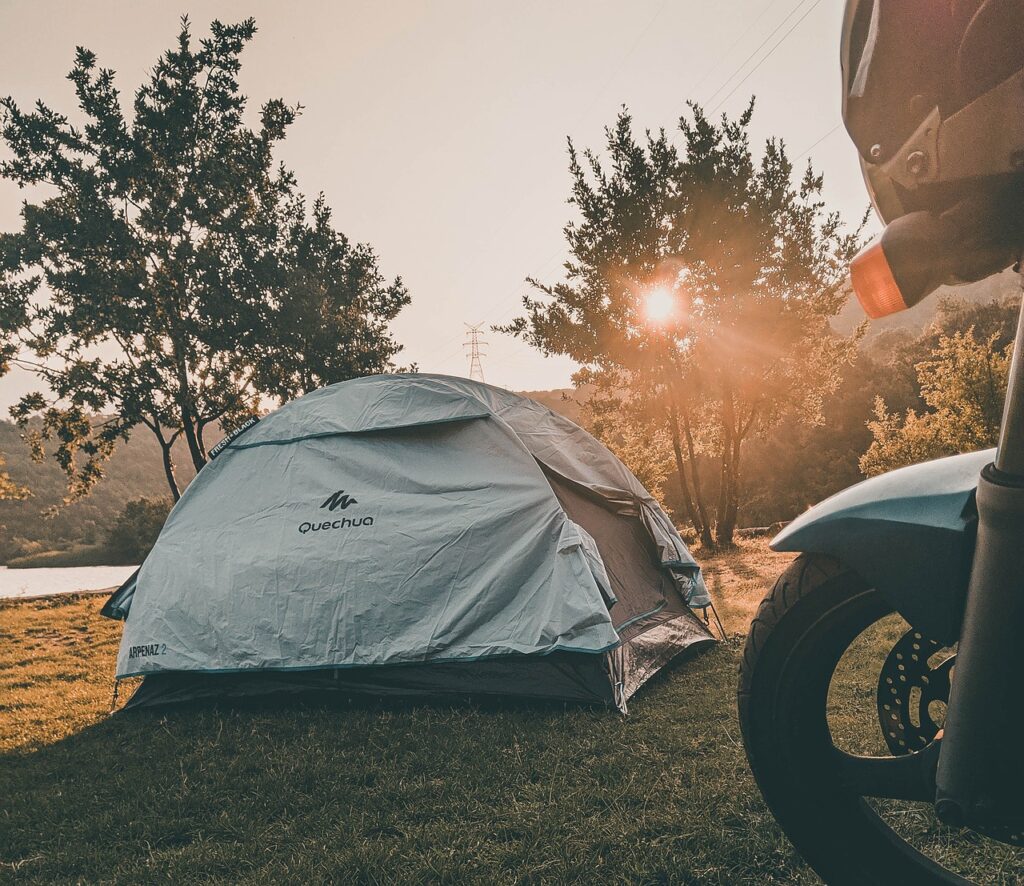
Accommodation Options
After a long day of riding, having a comfortable and motorcycle-friendly place to rest and rejuvenate is essential. Here are some accommodation options to consider for your journey:
- Campgrounds: If you enjoy the outdoors and want to immerse yourself in nature, camping is an excellent option. Many campgrounds offer facilities specifically designed for motorcyclists, such as designated tent areas, bike parking, and amenities like showers and restrooms. Camping allows you to save money, enjoy the tranquility of the great outdoors, and connect with fellow travelers.
- Motels and Hotels: Motels and hotels provide convenience, comfort, and a range of amenities. Look for establishments that offer motorcycle-friendly features such as secure parking, motorcycle cleaning stations, and easy access to your room. Consider choosing accommodations with laundry facilities, as it allows you to refresh your riding gear during longer trips.
- Hostels: Hostels are a budget-friendly option that also encourages social interactions with fellow travelers. While they may not always have dedicated parking spaces, many hostels provide storage areas where you can securely store your motorcycle overnight. It’s a great option if you’re looking for a vibrant and communal atmosphere.
- Guesthouses and Bed & Breakfasts: For a more personalized and cozy experience, consider staying at guesthouses or bed & breakfasts. These accommodations often offer a homely atmosphere, comfortable rooms, and delicious breakfast options. Some guesthouses may even provide secure parking for motorcycles.
- Motorcycle-Friendly Accommodations: Look for accommodations specifically marketed as motorcycle-friendly. These establishments cater to the needs of motorcyclists, offering amenities such as covered parking, motorcycle washing facilities, tool kits, and even on-site repair services. Motorcycle-friendly accommodations understand the unique requirements of riders and can enhance your overall experience.
- Online Platforms and Apps: Utilize online platforms and apps dedicated to motorcycle travel, such as Rider Friendly or MotoStays. These platforms connect riders with fellow enthusiasts who offer their homes or properties as accommodations. It’s an opportunity to meet like-minded individuals and experience the local culture firsthand.
- Booking in Advance: Depending on the popularity of your destination or the time of year, it’s advisable to book accommodations in advance, especially during peak travel seasons. This ensures you have a guaranteed place to stay and prevents any last-minute scrambling for available rooms.
Read reviews from other motorcyclists or travelers to gain insights into the experiences and facilities provided by each accommodation option. Remember, the choice of accommodation ultimately depends on your personal preferences, budget, and the type of experience you want to have.
Budgeting and Expenses
By estimating your expenses and making informed choices, you can ensure a financially sustainable journey. Here are some tips to help you budget effectively:
- Fuel Costs: Fuel expenses will be a significant part of your budget. Estimate your average fuel consumption based on your motorcycle’s mileage and the distance you plan to cover. Research local fuel prices along your route and factor in any potential variations. Consider using mobile apps or websites that help you find the cheapest fuel prices in the areas you’ll be traveling through.
- Accommodation: Determine your accommodation budget based on your preferred type of lodging. Research the average prices for campgrounds, motels, hotels, hostels, or guesthouses along your route. Keep in mind that prices may vary depending on the season, location, and availability, so it’s advisable to book in advance.
- Food and Meals: Allocate a budget for meals and snacks during your road-trip. Consider the type of dining experiences you prefer, whether it’s cooking your meals at campsites, eating at local restaurants, or a combination of both. If you’re on a tight budget, look for grocery stores or local markets where you can purchase supplies and cook your own meals.
- Attractions and Activities: Research the attractions and activities you plan to visit along your route. Some may have entrance fees or charges, so factor these costs into your budget. Determine which attractions are a priority for you and allocate funds accordingly.
- Miscellaneous Expenses: Leave room in your budget for miscellaneous expenses such as tolls, parking fees, motorcycle maintenance or repairs, souvenirs, and any unexpected costs that may arise during your journey. Having a contingency fund can help you handle unforeseen circumstances without straining your budget.
- Currency and Payment Methods: If you’re traveling to different countries or regions, familiarize yourself with the local currency and exchange rates. Carry some cash for emergencies or places that may not accept cards. Research the acceptance of credit or debit cards in the areas you’ll be visiting, and inform your bank about your travel plans to avoid any card transaction issues.
- Track Your Expenses: Keep a record of your expenses during the road-trip. This allows you to monitor your spending, identify areas where you can cut costs if needed, and adjust your budget accordingly for future trips.
It’s important to strike a balance between sticking to your budget and allowing yourself some flexibility for spontaneous experiences or unforeseen expenses. Being mindful of your spending and planning ahead will help ensure a financially successful motorcycle road-trip without sacrificing the enjoyment of your journey.
Local Laws and Regulations
Familiarize yourself with the local laws and regulations of the areas you’ll be traveling through. Adhering to these laws ensures a safe and legal journey. Here are some key considerations:
- Traffic Laws: Understand and obey the traffic laws of each country, state, or region you’ll be visiting. This includes speed limits, lane usage, overtaking rules, and any specific regulations applicable to motorcycles, such as helmet laws or lane filtering guidelines.
- Licensing and Documentation: Ensure you possess the required licenses and documentation to operate a motorcycle in the areas you’ll be traveling through. International travelers may need an International Driving Permit (IDP) in addition to their home country license. Check the specific requirements for each country or region and carry the necessary documentation with you at all times.
- Insurance: Verify that your motorcycle insurance is valid and provides coverage for the areas you’ll be traveling through. Some countries or regions may require additional local insurance, so research whether you need to obtain it to comply with local regulations. Carry proof of insurance and any necessary documents with you.
- Motorcycle-Specific Laws: Be aware of any motorcycle-specific laws or regulations that may be in effect. These can vary from place to place and may include restrictions on modifications, noise limits, or specific equipment requirements, such as mirrors or turn signals. Ensure your motorcycle meets the necessary criteria to comply with these laws.
- Cross-Border Travel: If you’re crossing international borders during your road-trip, research the specific requirements for motorcyclists. Some countries may have specific customs procedures, temporary importation requirements, or restrictions on certain types of motorcycles. Be prepared to present your motorcycle’s registration, insurance, and other necessary documentation when crossing borders.
- Environmental and Conservation Laws: Respect and adhere to environmental and conservation laws in the areas you’ll be visiting. This includes guidelines for camping, waste disposal, and responsible riding practices to minimize your impact on natural habitats and protected areas. Follow any signage or instructions provided at national parks or conservation areas.
- Emergency Contact Information: Take note of local emergency contact numbers, such as police, ambulance, or roadside assistance services, in the areas you’ll be traveling through. Save these numbers in your phone or carry them in a readily accessible location in case of emergencies.
Laws and regulations can vary greatly from one location to another, so it’s crucial to research and understand the specific requirements for each area you’ll be traveling through. By respecting and complying with local laws, you not only ensure your safety but also contribute to a positive experience during your motorcycle road-trip.
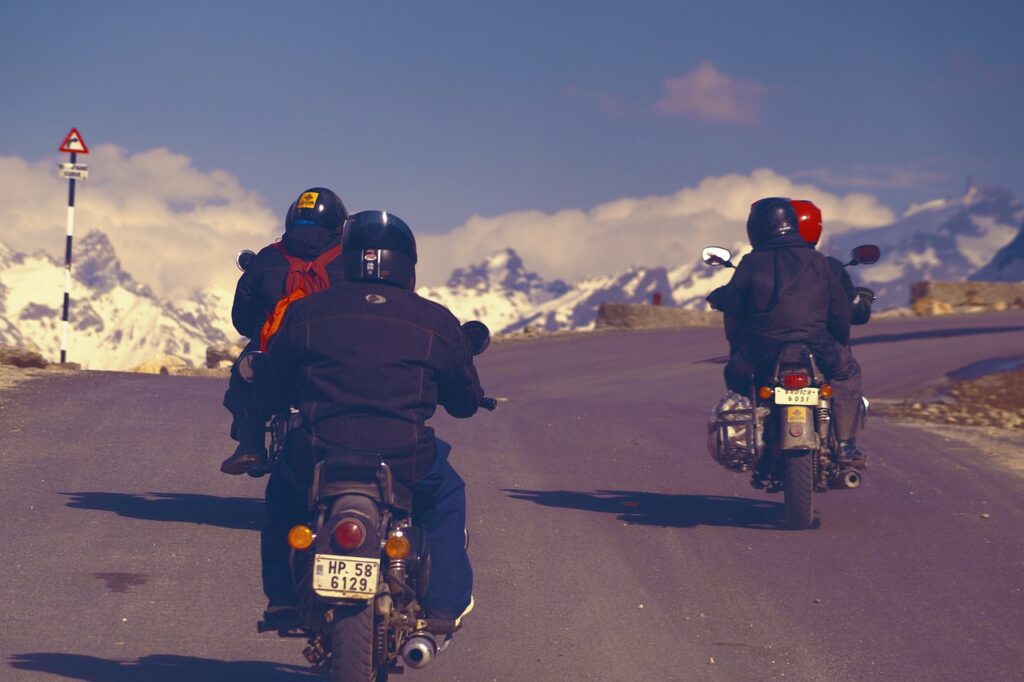
Immersing in the Experience
A motorcycle road-trip offers more than just a means of transportation—it provides an opportunity to fully immerse yourself in the journey and create lasting memories. Here are some tips for embracing the experience and making the most of your motorcycle road-trip:
- Embrace Spontaneity: While planning is important, don’t be afraid to deviate from your itinerary and embrace spontaneity. Allow yourself the freedom to take detours, explore unexpected sights, or follow the recommendations of locals you meet along the way. Some of the most memorable moments often come from unplanned adventures.
- Connect with Local Communities: Engage with the local communities you encounter during your road-trip. Strike up conversations with fellow travelers, restaurant owners, or locals at gas stations. Learn about their culture, traditions, and favorite local spots. Their insights can lead you to hidden gems and enrich your experience.
- Explore Hidden Gems: Beyond the popular tourist attractions, seek out lesser-known destinations and hidden gems. Research off-the-beaten-path routes, scenic viewpoints, or quaint towns that may not be on the typical tourist itinerary. These hidden gems often offer a more authentic and unique experience.
- Take Your Time: Don’t rush through your journey. Allow yourself ample time to soak in the scenery, pause for photo opportunities, or simply enjoy the moment. Give yourself the freedom to linger in a captivating location or spend extra time in a place that resonates with you. Remember, it’s about the journey, not just the destination.
- Immerse in Nature: Take advantage of the opportunity to connect with nature. Enjoy the wind in your hair as you ride through scenic landscapes, plan stops at national parks or natural reserves, or take short hikes to breathtaking viewpoints. Immerse yourself in the sights, sounds, and serenity of the natural world.
- Capture and Preserve Memories: Document your experiences through photographs, videos, or a travel journal. Capture the stunning landscapes, unique encounters, and memorable moments along your journey. These mementos will allow you to relive the adventure and share your story with others.
- Disconnect from Technology: While technology can enhance your road-trip experience, don’t let it overshadow the present moment. Take breaks from constant connectivity and allow yourself to disconnect from screens. Appreciate the beauty of the open road and engage in face-to-face interactions with fellow travelers.
- Reflect and Meditate: Use the solitude and tranquility of the road to reflect on your experiences, set intentions, or simply practice mindfulness. Motorcycle road-trips offer a unique opportunity for introspection and self-discovery. Take moments to be present, to appreciate the freedom and adventure you’re experiencing.
- Ride Solo or in a Group: Decide whether you prefer the solitude and freedom of riding solo or the camaraderie of riding with others. Both options have their advantages. Riding solo allows for self-reflection and complete freedom of choice, while riding in a group can provide companionship, shared experiences, and a support network.
- Embrace the Unexpected: Lastly, embrace the unexpected. Road-trips have a way of presenting surprises and challenges. Embrace them as part of the adventure. Adapt to changing conditions, navigate through unexpected detours, and approach each moment with an open mind and a positive attitude.
Every motorcycle road-trip is a unique and personal experience. Embrace the adventure, connect with your surroundings, and allow yourself to be fully present in the moment. By immersing yourself in the experience, you’ll create lifelong memories and truly savor the joy of the open road.
By following the essential steps outlined in this guide, you can plan a successful and memorable motorcycle road-trip. From choosing the right destination and planning your route to packing efficiently and ensuring motorcycle maintenance, each aspect contributes to a safe, enjoyable, and hassle-free experience on the open road. Don’t wait any longer to plan the motorcycle road trip of your dreams. Safe travels and enjoy the journey!
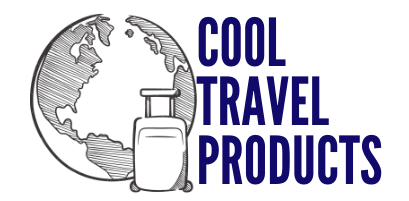
Planning a motorcycle road trip is a thrilling adventure waiting to happen! This article on Cool Travel Products delivers a comprehensive guide that’s brimming with vital insights for anyone gearing up for such a journey. It covers everything from essential gear to safety measures, ensuring a remarkable and enjoyable ride.
Yet, here’s my query: for someone like me, a novice rider, what key tips or considerations should be on my radar for a motorcycle road trip, especially catering to beginners? Are there specific routes or destinations that experts recommend for those just starting out? I’m eager to soak in your suggestions and wisdom on how to maximize the experience of a motorcycle road trip while prioritizing safety and comfort for newcomers to riding.
Thank you for the comment!
For beginners, safety should be your top priority. Invest in quality safety gear and consider taking a motorcycle safety course if you haven’t already. Start with shorter practice runs to build your riding skills and confidence, gradually working your way up to longer trips. There are definitely beginner-friendly routes with good conditions and less traffic. One highly recommended route for beginners is the Blue Ridge Parkway in the United States, often called ‘America’s Favorite Drive.’ This 469-mile stretch offers gentle curves, stunning scenery, and a leisurely pace, making it perfect for new riders. Don’t forget to plan regular breaks to stay comfortable and reduce fatigue. And if you’re looking for specific routes or destinations, connecting with local riders or online forums can yield valuable insights.